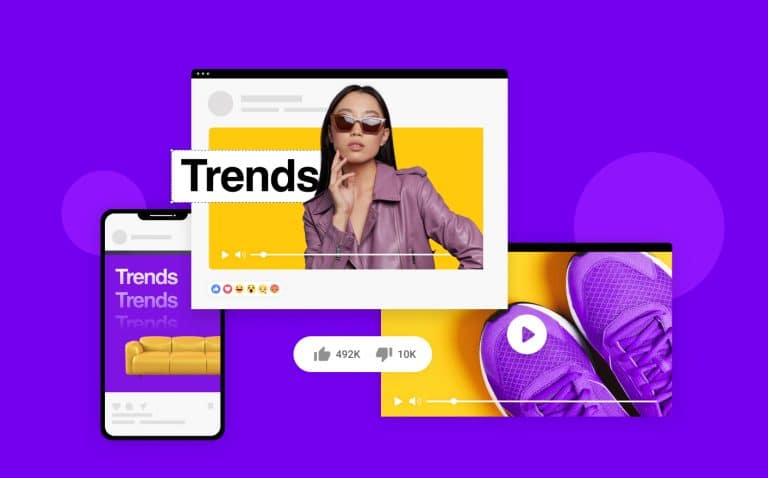
How to Write Better Video Captions
A study in 2001 found that the average American was consciously exposed to roughly 247 marketing messages daily, yet only really noticed around half of them. Those numbers were probably considered super high for the time–considering mobile usage was pretty much slim to none compared to today.
If we triple that number to suit today’s content consumption, just for fun, it comes to a whopping 741 marketing messages in one day. That’s a lot of marketing jargon that people today are likely to ignore. It means in order to catch and hold the attention of your audience, not only do your visuals need to be on point, but your social media video caption text needs to be even better.

How to Caption A Video – Best Practices
Writing engaging video captions might not come easily to you. Even seasoned copywriters struggle to create a caption that sums up brand messaging for fast-moving media with short time and space. But it’s not something that should cripple your plan and get in the way of success.
We put together three top tips to help you write a better video caption for your ads. These tips will hopefully change the way you think and help get the results you’re looking for with your video ad creation.
1. Study the Audience Language
This may seem obvious, but it’s important to use appropriate language for your target demographic and region. This means more than using the correct native language for your region. It means considering active or passive voice, positive or negative words, slang, anecdotes, pop culture, and more. If you are targeting a different country with a different language, you can use preply.
Here’s a couple of points to help you get better at captioning videos:
- Most times, active voice works better than passive voice as it communicates immediate action and uses less words.
- It’s good for saving space, too, if you’re limited on characters.
- A recent trend shows that headlines using more negative works, like never and worst, encourages higher engagement rates. After all, people are hungry for information. Negative words stand out and tell us so much more than words like always and best.
- Only use slang if it suits your brand identity and image. If you want to communicate a younger, fresher tone then incorporating popular and appropriate slang words can do wonders for all your KPIs.
- Anecdotes also work well as captions. They come with a sense of familiarity and comfort. We all know “those sayings.” So using them to add a caption in your videos can invoke some nostalgic and memorable emotions.
Keep It Short & Simple
Twitter revolutionized the way we write. No more long, super punctuated sentences. Only 120 character-limited statements welcome. Some may find this super difficult. But it’s a great template for writing better video captions.
Videos (especially on Facebook with the 20% text rule) don’t usually work with tons of text covering the visuals. People like to watch and absorb the message from the good video clip shown to them. Short and simple text will add to the experience of watching, not distract from it.
This idea also applies to the style of your captions and fonts for subtitles. Never use invasive fonts that take away from your visuals. Try using complementing colors to the video footage. The caption style should blend cohesively with the look and theme of the video.
Keep It Clear
When it comes to writing video captions, clarity is king. Generally, you don’t want people walking away from your video confused. Asking and answering these three questions about your product or service can really help you write and insert captions to video content effectively.
What is it about?
Ask this several times during the writing process. It will help you simplify your text and clarify exactly what it is.
What do you get?
This question will help you flesh out the benefit of your product or service. Audiences like to know exactly what they get when they buy into an idea. Even if you write the benefit in more creative language, it’s still good to communicate clearly what’s it in for the audience.
What can you do with it?
Like the question above, writing with this question in mind helps you clearly communicate the benefits of your product or service. Once you know this, you can go about writing more creatively as well.
Conclusion
At the end of the day, successful videos and ads happen when the brand communicates authenticity. Knowing the right type of language to use in your video caption, and keeping it simple and clear with your audience, can help build trust and create a deeper connection.


